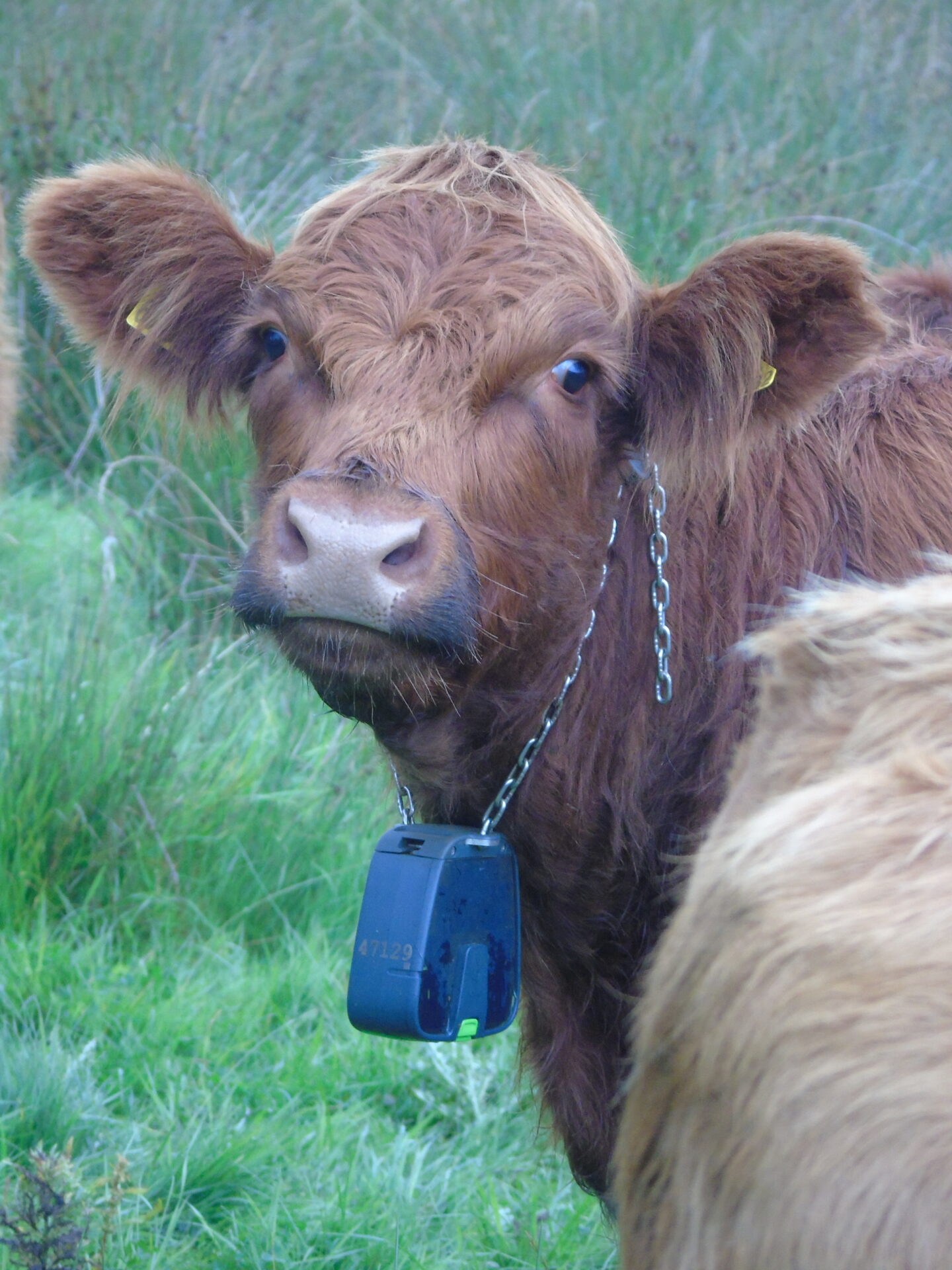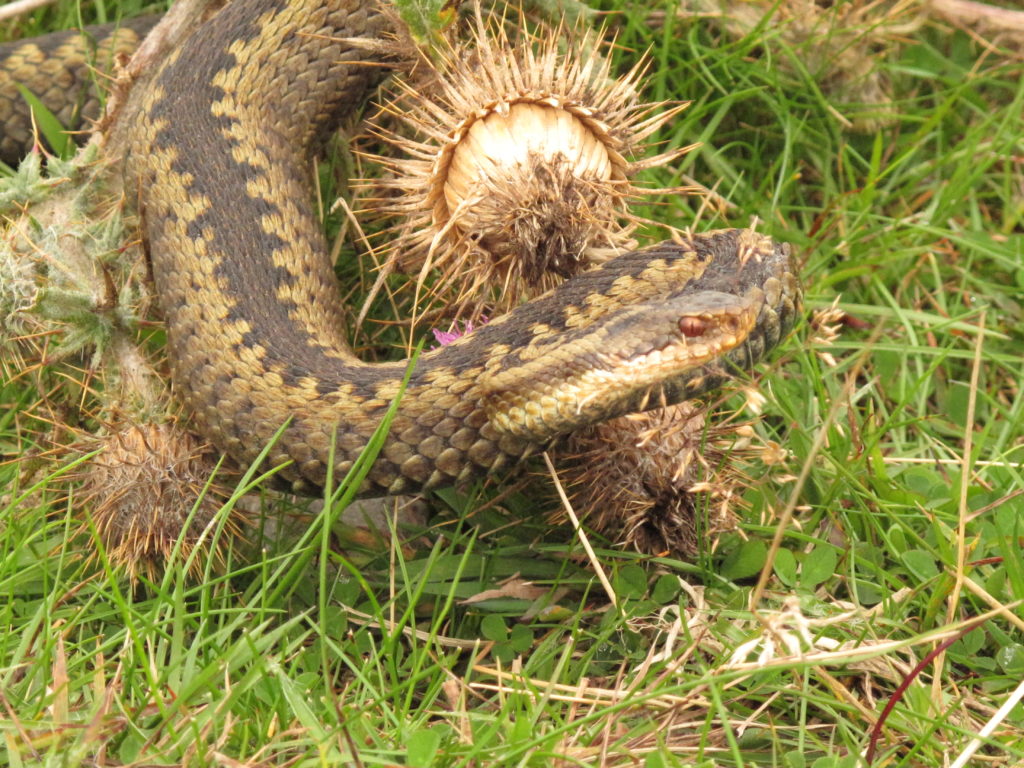News
Satellites, cows and lapwings: conservation grazing in the space age
5 December 2024
Satellites, cows and lapwings: conservation grazing in the space age
by Emma Wright, North Pennines AONB Partnership
Farming and the space sector have long had closer connections than you might think. Cutting edge satellite technology lies behind many farm businesses, with farmers using satellite data to inform their cropping from seed to harvest. Now, thanks to funding from National Lottery Heritage Fund, information from high up in the thermosphere is supporting conservation grazing here in the North Pennines.
The North Pennines AONB Partnership, through its Fellfoot Forward Landscape Partnership Scheme, has provided funding to fit cattle at RSPB Geltsdale with brand new collars. Each collar, similar in size and appearance to an Alpine cow bell, houses a solar-powered GPS unit and a warning system. Staff at Geltsdale can view the cattle locations via an app on their phones. The system enables a virtual ‘fence’ to be drawn across an area, which the cattle are discouraged from crossing via the warning system in their collars. The collars play a warning sound when the animal crosses a border defined on the system’s app. When the cow responds to the warning sound by turning back towards the rest of the herd in the virtually fenced area, the tone continues to play until the animal is back inside the virtual fence. If the animal doesn’t turn around, it will receive a short electrical pulse via the collar. At its highest, this electrical pulse measures 0.2 Joules and lasts for 0.5 to 1 second. This is less than the output of a standard electric fence (data from Silje Eftang and Knut E. Bøe, Virtual Fences for Cattle, 2018).
So why are we fitting collars to cattle, looking at our phones to check on livestock and using satellites to help with farming in the uplands? And what’s wrong with a normal line of fencing? Let’s take a step back and consider cattle in our landscape.
When we picture a typical upland farm in the North Pennines, we may see hardy hill sheep and centuries old hefting and shepherding traditions. Yet cattle are also part of the farming heritage of this landscape, grazing pastures in the summer and lower meadows in the autumn. This mix of grazing livestock provides a broad range of habitats for wildlife, as sheep and cattle feed differently. Sheep nibble the sward close to the base and are selective grazers, often targeting flowering plants. Cattle do not graze so close to the ground and will leave tussocks of grass and flower heads. Cattle trampling and ‘poaching’ creates small patches of open ground, which offer the perfect site for new seeds to take root.
Traditional ‘mixed’ grazing, using both cattle and sheep, is one piece in the patchwork of our farmed upland landscape. Along with flower-rich hay meadows, rush pastures, boggy bits and scrubby edges, the livestock play a vital role in our nature-friendly farming here in the North Pennines. From curlew to black grouse, bilberry bumblebees to water voles – our low-input, high nature value farms have international importance for the wildlife that benefit from these traditional farm systems.
RSPB Geltsdale is one such nature friendly place, where RSPB staff and their tenant farmer have been swift to explore cattle collars, combining generations-old farming practises with this cutting-edge technology. Here, a hardy cross breed of cattle graze the moorland edge and lower meadows, breaking up stands of bracken and trampling rushes, keeping rank grasses low in young woodland and making space for new plants to set seed. Alongside this conservation grazing, the RSPB reserve team monitor vegetation growth year-round, careful to ensure a mix of sward lengths and plant species that benefit threatened wildlife such as ring ouzel, black grouse, curlew and lapwing. The new cattle collars mean that the team can respond to vegetation growth and shift the cattle around as needed, by creating ‘virtual fences’ for new grazing areas through the reserve.
A traditional fence is expensive to erect and causes fatalities in black grouse, curlew, short eared owl and other bird species, which regularly fly into fences on open ground. They disrupt the connectivity of habitats and scar the landscape. Virtual fences, conversely, create no such threat to bird life and other impacts, and can be moved around throughout the grazing season, ensuring the best possible outcomes for wildlife.
The virtual fences also offer big wins for animal welfare. With the collars connected via satellite signal to an app on a smart phone, farmers get an instant alert if an animal strays beyond a ‘virtual’ fence, or if a collar has been stationary for some time. Daily checks on the herd become far simpler, as farmers can rapidly locate individuals. This, you can imagine, is a considerable benefit in an extensive upland site criss-crossed with ghylls, gullies and woodland.
In-depth research has tested the ability of cattle to associate the warning sounds with the electric pulse, concluding that cattle quickly learn to make this association and can therefore be safely retained within a ‘virtual’ fence. At Geltsdale, RSPB staff have found that the number of warning sounds far exceeds the number of pulses by 10:1, proving that the warning noise alone is a clear deterrent to cattle who test the virtual fence boundary. Importantly, the heart-rate and behavioural stress response of cattle to the pulses has been tested and determined to be minimal (e.g. Silje Eftang and Knut E. Bøe, Virtual Fences for Cattle, 2018). Staff at RSPB Geltsdale report cattle showing mild inconvenience from the pulse, which lasts one second, recovering to graze again within seconds. A vet has been checking the herd at Geltsdale regularly since their collars were fitted, and reports that the cattle are all in good health, grazing happily and exhibiting normal behaviour.
Here at the North Pennines AONB Partnership, we know that high nature value farming is an asset that must be supported and promoted. The virtual fence system is an example of a tool which offers tremendous benefits to both wildlife and farm businesses. Fewer traditional fences in our landscape means less bird strikes and fatalities, better habitat connectivity and a more natural-looking landscape. The flexibility of the virtual fence system means that we can utilise grazing livestock to respond to the needs of wildlife: heavier grazing and a shorter sward here for ring ouzel; a scrubbier, more tussocky area there for black grouse, for example. We can plant new ghyll woodland, following the maxim ‘right tree in the right place’, without the immense difficulty of fencing steep, rocky ground. Meanwhile, farmers can rapidly check their animals, ensure they’re foraging nutritionally valuable vegetation and continue to produce the high-quality livestock for which the North Pennine hill farms are renowned.
RSPB Geltsdale are a real trailblazer in their uptake of the virtual fence technology, and the North Pennines AONB Partnership is delighted to be working with them and funding this trial. Through our Fellfoot Forward programme, we are excited to share this trial with other farmers in the region. We hope to find new locations where this space-age technology can join forces with ancient livestock traditions in order to support wildlife-friendly, high nature value farming.















